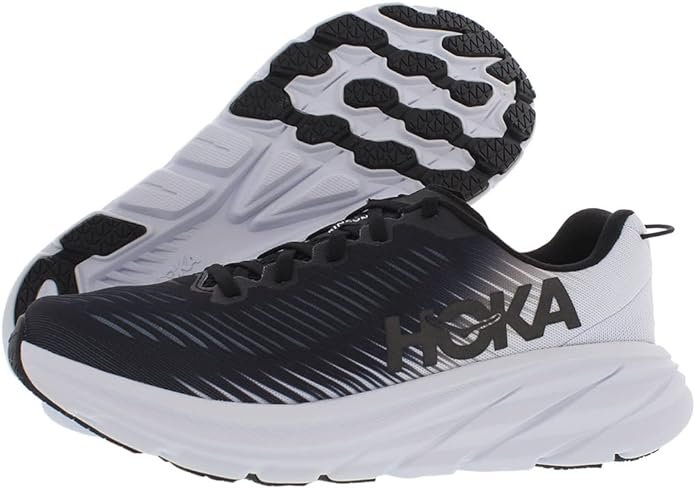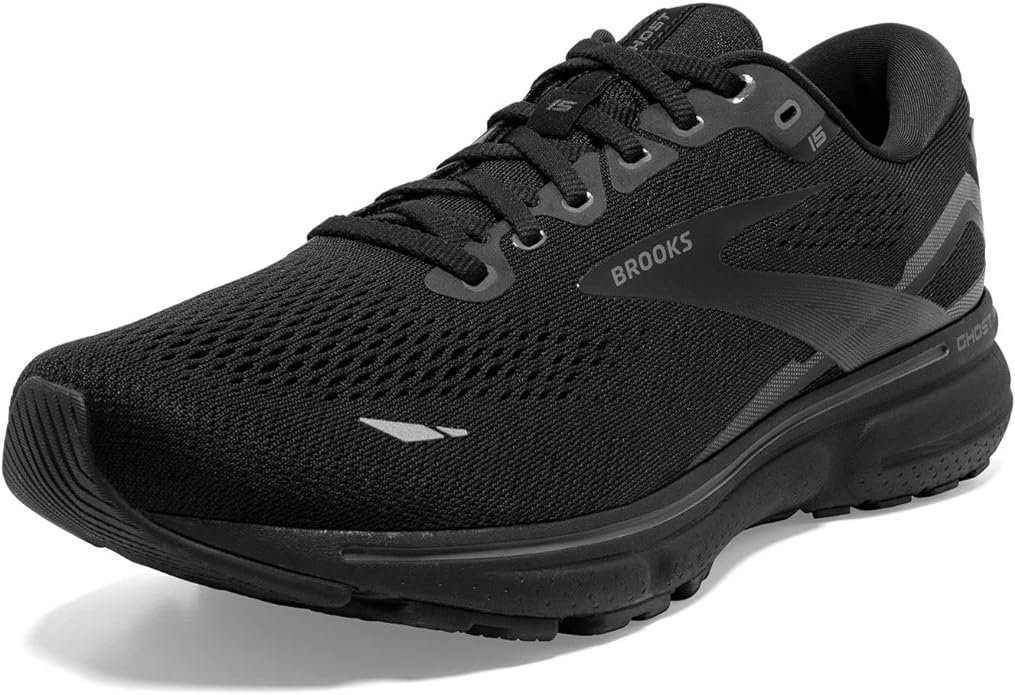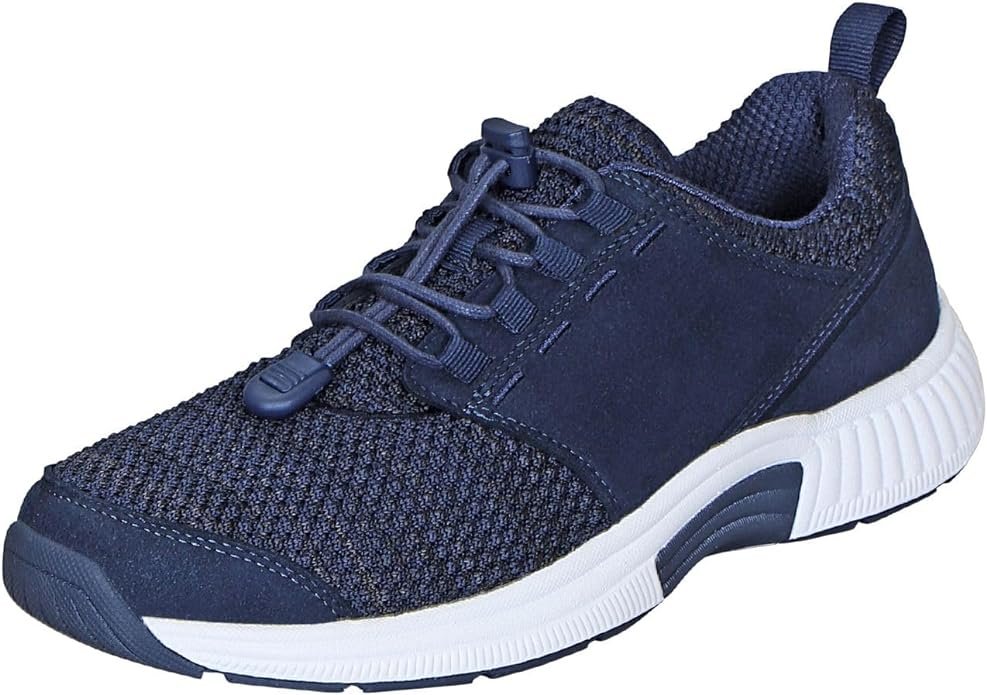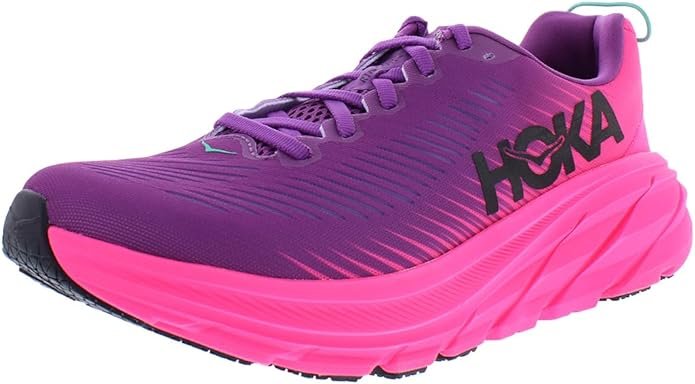Nurses spend countless hours on their feet, making the choice of footwear a crucial decision for comfort, support, and durability. The right shoes can not only alleviate the strain of long shifts but also prevent long-term foot, knee, and back problems. It is essential for nursing professionals to select shoes that provide the best overall value — including optimal support, ease of cleaning, slip resistance, and of course, comfort.
While personal preference plays a role, there are common features in shoes that meet the demands of nursing. These features may include cushioned insoles, supportive arches, and breathable material. A variety of options are available on the market, from athletic sneakers to professional clogs, each designed to accommodate the unique challenges of the healthcare environment.
Choosing the best shoes for nursing isn’t solely about personal comfort; it’s also about safety and performance on the job. As they care for others, nurses must also care for themselves, starting from the ground up with the right pair of shoes. The selection process takes into account recommendations from colleagues, feedback from product reviews, and understanding the specific requirements of one’s role within the healthcare setting.
Understanding Nursing Shoes

When selecting nursing shoes, it’s crucial to understand their role in providing comfort and support through long shifts. These shoes are designed uniquely to meet the demands of a nurse’s active work environment.
Importance of Proper Footwear
Proper footwear is essential for nurses because it provides the necessary support for hours spent on their feet. Comfortable, well-fitted shoes can help prevent back pain, leg fatigue, and other physical stressors that come from standing and walking for extended periods. Moreover, good shoes can help in reducing the risk of slips, trips, and falls, which is vital in the fast-paced, often-slippery hospital settings.
Characteristics of Good Nursing Shoes
Good nursing shoes exhibit several key features:
- Non-Slip Outsoles: To ensure safety in various healthcare scenarios.
- Adequate Cushioning: For absorbing the impact and reducing foot fatigue.
- Supportive Design: Aligns the foot properly to prevent overpronation or supination.
- Durable Materials: For longevity despite the demanding hospital environment.
- Fit and Sizing: They should have a snug fit without constricting, allowing room for natural foot expansion throughout the day.
- Easy to Clean: In a profession where spills and stains are common, the ability to clean shoes easily is a must.
Evaluating Shoe Comfort & Fit
When selecting nursing shoes, comfort and fit are paramount. These attributes directly affect a nurse’s work performance and overall foot health.
Finding the Right Size
A precise fit is crucial for nursing shoes. One should measure their feet professionally or use a brand’s size chart when purchasing, as sizes can vary between manufacturers. It’s essential to consider both length and width to ensure there is enough space to prevent cramping while avoiding excess movement that could lead to blisters.
The Significance of Arch Support
Proper arch support is integral to comfort, especially during long shifts. Nurses should look for shoes that match their arch type—low, neutral, or high. Good arch support can alleviate foot pain and reduce the risk of plantar fasciitis.
Important Features for Comfort
Nurses should prioritize these features for maximum comfort:
- Cushioned Insoles: These provide shock absorption and can often be replaced for custom orthotics.
- Breathable Materials: Fabrics like mesh allow for airflow, which minimizes moisture and keeps feet dry.
- Padded Collars: An often overlooked feature, padded collars reduce the risk of ankle rubbing and discomfort.
- Lightweight Design: Lighter shoes reduce leg fatigue; thus, selecting a shoe with a light, resilient sole is advantageous.
- Slip-Resistant Outsoles: While not directly related to comfort, they contribute to safety, which in turn can reduce foot strain.
Durability & Material Considerations
When selecting nursing shoes, durability and the quality of materials are critical. These factors ensure the shoes withstand the rigors of long shifts and frequent cleaning, providing lasting support and comfort.
Materials That Last
The lifespan of nursing shoes is significantly influenced by the materials used in their construction. Leather is highly durable and offers a degree of water resistance, while modern synthetic materials can provide breathability and flexibility. Some shoes, like the Gales Shoes, are designed specifically for healthcare environments, offering both durability and the ease of cleaning which is essential for infection control.
Maintaining Your Shoes
To extend the life of nursing shoes, proper maintenance is necessary. Cleaning instructions vary depending on the material, but generally, most shoes can be wiped down with a damp cloth. For shoes that accommodate machine washing, such as the On Cloud 5, follow the manufacturer’s guidelines to prevent material breakdown. It’s also beneficial to rotate between two pairs of shoes to allow them to air out and maintain their shape between uses.
Safety & Slip Resistance
When considering the best shoes for nurses, safety and slip resistance are non-negotiable features. These characteristics ensure that nurses can move quickly and confidently throughout their shifts.
Essential Safety Features
Protection: Nurses’ shoes should offer adequate toe protection to guard against falling objects and compression injuries. Cushioning and support, which contribute to overall foot health, are vital for enduring long hours of standing and walking.
Slip-Resistant Technologies
Outsole grip patterns: These are designed to maintain traction on wet and slippery surfaces. Shoes such as the GALES Pro Line utilize advanced anti-slip soles. Materials like rubber with specialized treads also play a crucial role in reducing the likelihood of slips and falls.
Top Shoe Brands for Nurses

When considering footwear for the demanding nursing profession, one must prioritize brands that are renowned for their durability and comfort. These brands often leverage proprietary technologies to ensure their shoes meet the specific needs of healthcare professionals.
Reputation and Reliability
Healthcare workers commonly trust certain brands that have built a reputation for creating shoes that withstand long hours and various hospital conditions. Brands like Clove Shoes are frequently mentioned by nurses for their comfort during extended shifts, as well as their easy-to-clean design, making them a pragmatic choice for the healthcare environment. Other esteemed brands include Brooks Shoes, which are highlighted for their exceptional support and cushioning.
Another trusted name is Hoka One One, offering designs that are not only comfortable but also include extra cushioning and support. Asics is known for their Gel-Kayano model, which combines stability and comfort, making them ideal for nurses who are on their feet all day.
Brand-Specific Technologies
Innovation in shoe technology plays a crucial role in the development of nursing footwear. For example, BALA Shoes are designed with the healthcare industry in mind, featuring fluid-resistant materials and slip-resistant soles for safety in quick-paced environments.
Alegria offers shoes with enhanced arch support, utilizing cork, memory foam, and latex footbeds for improved posture and reduced stress on joints. Meanwhile, brands like New Balance have partnered with medical apparel companies like Figs to create the Figs | New Balance 996 Unisex shoe, offering versatility and style without sacrificing comfort or support. These brand-specific features reflect a commitment to addressing the multifaceted needs of nursing professionals through specialized footwear solutions.
Design & Aesthetic Choices

When considering the best shoes for nursing, one must weigh both professional and personal considerations. The choices made in the design and aesthetics of nursing shoes can impact a nurse’s comfort, compliance with dress codes, and personal expression.
Professional Appearance
Professionally appropriate nursing shoes should maintain a balance between formality and practicality. Uniform regulations often dictate a color scheme, typically favoring solid colors like white, black, or navy blue to convey cleanliness and simplicity. For instance, the Clove Shoes are well-regarded among healthcare professionals for their clean design suitable for hospital environments. Materials that resist stains and are easy to clean, such as synthetic leathers or rubber, are also essential for maintaining a professional look.
Personal Style and Functionality
While the aesthetics should align with workplace standards, nurses also have the opportunity to express personal style through their choice of shoes. In addition, functionality plays a significant role; as such, nurses often opt for shoes offering excellent support and comfort. Options like the Brooks Shoes bring a blend of personal style and the necessary support for long shifts. Features like cushioned heels and adjustable straps permit individualized fit and comfort, ensuring sustained performance throughout demanding work hours.
The Impact of Shoe Weight
The weight of the shoes nurses wear can significantly affect comfort and endurance during long shifts.
Advantages of Lightweight Shoes
Lightweight shoes for nurses offer several benefits, primarily related to comfort and reduced fatigue. These shoes can improve a nurse’s ability to move quickly and with agility, an important aspect when responding to emergency situations. Lightweight designs often translate to less strain on the feet, ankles, and lower back, allowing for longer periods of wear without discomfort.
- Boosts Mobility: Lighter shoes enhance a nurse’s ability to move swiftly and efficiently.
- Decreases Fatigue: Less weight means reduced energy expenditure, helping nurses to preserve energy throughout the day.
When to Choose Heavier Shoes
Heavier shoes may be beneficial in certain situations, such as when additional protection or support is needed. Shoes with a bit more weight tend to offer more structural stability and often have reinforced soles, which can provide better defense against punctures or compression injuries. They are particularly practical for nurses working in environments where there is a higher risk of dropping heavy objects on their feet.
- Enhanced Protection: Heavier shoes can offer better protection from workplace hazards.
- Greater Support: Shoes with more substance may provide improved arch support and reduce overpronation.
Price vs. Quality
When selecting nursing shoes, it’s critical to weigh the durability and comfort associated with higher-priced options against the affordability of budget-friendly choices.
Investing in Quality Footwear
High-quality nursing shoes often come with a higher price tag, but the investment reflects in their durability and ergonomic features. Brands like Clove Shoes are specifically designed for nurses, providing the necessary support for long shifts. Similarly, options like Hoka One One are known for their cushioning and stability, possibly reducing the risk of foot and back pain associated with prolonged standing and walking.
Budget-Friendly Options
For nurses monitoring their expenses, there are shoes that offer comfort and support without the premium price. Brands like Oofos and Asics provide shoes with essential features like shock absorption and proper alignment at a more accessible price point, as highlighted by reviewers on Verywell Health. It is important for nurses to consider that lower-cost shoes might need to be replaced more frequently, which could affect long-term cost efficiency.
The Role of Insoles and Orthotics

In a profession that requires extended periods of standing and walking, the correct support underfoot is crucial. Insoles and orthotics play a significant role in providing stability, distributing pressure, and enhancing comfort for nurses.
Custom Orthotics for Nurses
Custom orthotics are tailor-made devices designed to align the foot and ankle into the most anatomically efficient position. They are specifically crafted based on a mold or digital scan of a nurse’s foot, allowing for a perfect fit that can address individual issues such as overpronation or supination. Custom orthotics for nurses offer precise support which can mitigate the development of foot-related conditions and reduce overall body fatigue.
Quality Insoles and Their Benefits
In contrast to custom orthotics, quality insoles are ready-made and can be purchased off-the-shelf, yet they offer a range of benefits to nursing professionals. Key benefits of investing in good insoles include:
- Enhanced Comfort: Adding a layer of cushioning that can absorb the shock of walking on hard surfaces.
- Improved Posture: Proper foot support helps to align the body from the ground up, potentially improving posture and gait.
- Extended Shoe Life: Insoles can protect the interior of the shoe, ensuring that it lasts longer even with daily use.
- Prevention of Foot Conditions: Quality insoles can prevent the arch from straining, protecting against conditions like plantar fasciitis.
Nurses may consider specialized insoles such as those with high arch support, which provide substantial support for those who have higher arches and need extra stabilization.
New Innovations in Nursing Footwear
Advancements in technology and current trends are shaping the future of nursing footwear, offering improved support and functionality tailored for the healthcare environment.
Technological Advances
The integration of cutting-edge materials and smart design is revolutionizing nursing shoes. For instance, adaptive cushioning responds to individual foot pressure points for enhanced comfort during long shifts. Breathable fabrics combined with anti-microbial treatments are also becoming standard, proving essential for hygiene and odor control. Noteworthy among these innovations are shoes designed with proper posture and foot flexion in mind, aiming to mitigate health issues like plantar fasciitis.
Trends in Nursing Shoes
Aesthetic versatility without compromising on functionality marks current trends in nursing footwear. Bright colors and custom prints are gaining popularity, reflecting personality and style within the workplace. Additionally, the move toward eco-friendly materials speaks to a broader trend of sustainability within the industry. A representative example is Gales Shoes, which not only provide an array of color options but are conceived with nurse-specific requirements at their core.
Caring for Your Nursing Shoes
Proper maintenance of nursing shoes is crucial for hygiene and longevity. These tips will help ensure that they remain in top condition, providing comfort and support throughout long shifts.
Regular Cleaning Tips
Daily Care: After each use, nursing shoes should be wiped down with a damp cloth to remove dirt and fluids. Utilize a soft-bristle brush for stubborn stains on the soles.
Deodorizing: To keep shoes smelling fresh, consider sprinkling baking soda inside them overnight and then shaking it out in the morning.
Deep Cleaning: Depending on the manufacturer’s instructions, either machine wash with gentle detergent or hand wash with warm soapy water on a weekly basis. Air dry away from direct sunlight.
Extending the Life of Your Footwear
Storage: Store nursing shoes in a well-ventilated area to prevent moisture accumulation that can lead to odor and deterioration.
Rotation: If possible, rotate between two pairs of shoes to allow each pair to fully dry and recover between wears, reducing wear and tear.
Protective Sprays: Apply water-repellent sprays compatible with the shoe material to guard against stains and water damage, following the product’s directions carefully.
By adhering to these care tips, not only do nurses maintain a professional appearance, but they also provide a safer work environment by reducing the spread of contaminants.
Frequently Asked Questions
When selecting the best shoes for nursing, one should consider factors such as support during long shifts, durability, and compliance with hospital guidelines.
Which types of footwear provide the best support for nurses during long shifts?
Footwear with cushioned insoles and good arch support, such as ASICS Gel-Kayano, are essential for nurses during long shifts to minimize foot fatigue and discomfort.
What characteristics should nurses look for when choosing shoes for work?
Nurses should seek out shoes with slip-resistance, adequate cushioning, supportive design, and materials that are easy to clean.
Are there specific brands known for producing high-quality nursing shoes?
Yes, brands like Clove, Hoka One One, and Dansko are known for their high-quality nursing footwear options.
How often should nursing shoes be replaced to ensure maximum comfort and support?
Nursing shoes should be replaced every 6 to 12 months, or sooner if they show signs of wear that could compromise their functionality and support.
Can nurses wear sneakers, or is there a specific shoe style required in most hospitals?
While some hospitals have specific requirements, many allow nurses to wear sneakers as long as they are closed-toe, provide good support, and are made from materials that can be easily sanitized.
What are the best options for slip-resistant nursing shoes to maintain safety in the workplace?
Options like Gales slip-on shoes, which are designed in collaboration with healthcare workers, offer slip-resistance and other features tailored to the needs of nurses to maintain safety in the workplace.









[…] has established itself as a reputable brand in the healthcare footwear industry by focusing on key features that cater to the demanding needs of nursing professionals. Our analysis focuses specifically […]
[…] the best nursing shoes is crucial for healthcare professionals who spend long hours on their feet. The right […]